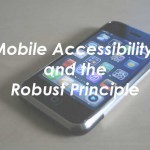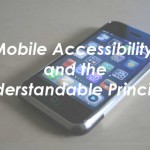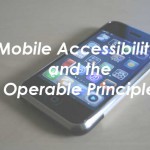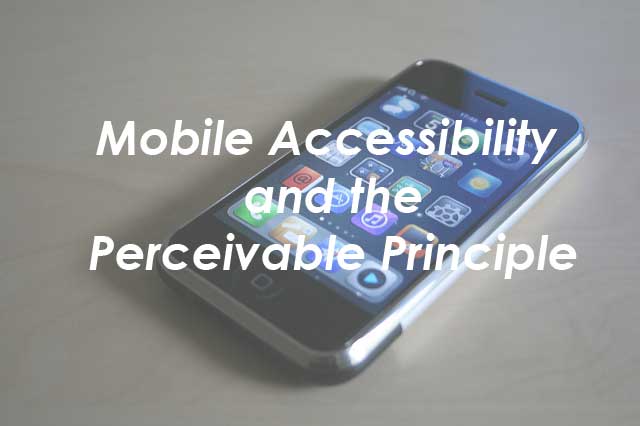
The W3C wants to help developers understand how WCAG 2.0 applies on mobile devices. They recently issued the first working draft on the topic. The guidelines and principles of WCAG are explained using the POUR method: Perceivable, Operable, Understandable, Robust.
In this post I will distill the W3C information on the Understandable principle.
Orientation
- Support both landscape and portrait orientations
- Changes in orientation must be programmatically exposed to ensure detection by devices such as screen readers
Consistent Layout
- Within a particular size and orientation, repeated items should be placed consistently
- Consistency between different screen sizes and screen orientations is not a requirement
Positioning before the Scroll
Position important items before the scroll.
Group Operable Elements
When two elements (e.g., an icon and a text link) perform the same action, group both items within the same actionable element.
Be Clear About Which Elements are Actionable
Actionable elements such as links or buttons should be indicated by more than one means. Use combinations of shape, color, style, positioning, text labels, and conventional iconography.
Custom Manipulations and Gestures
Provide easily accessible instructions to explain what gestures can be used to control a given interface and whether there are alternatives.
Mobile device image: William Hook







